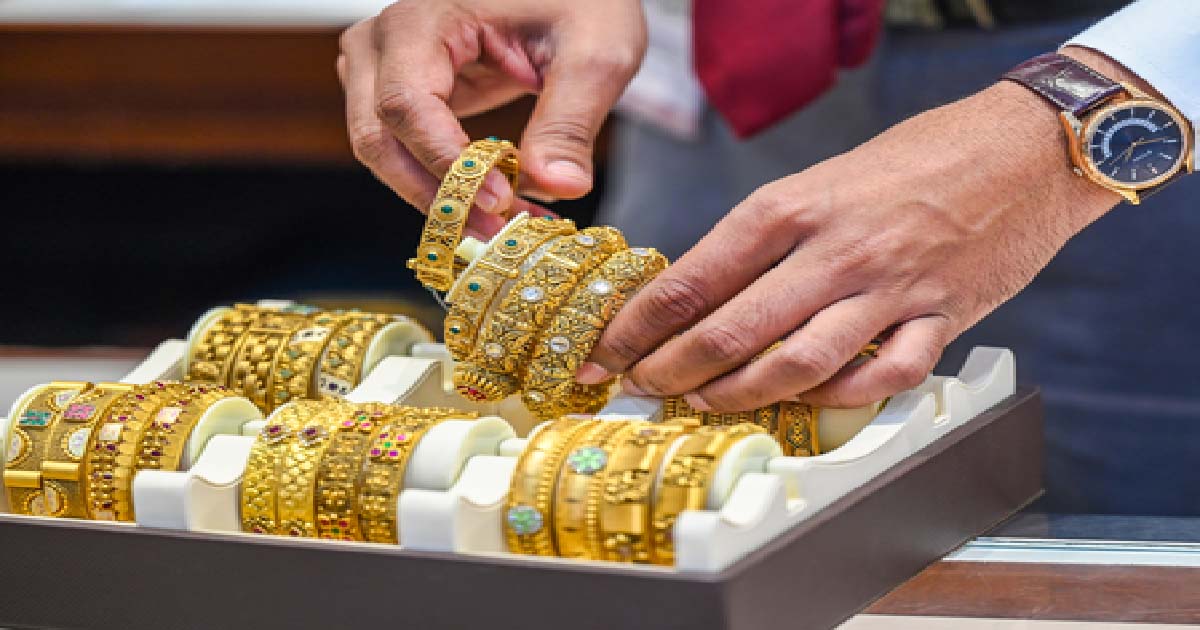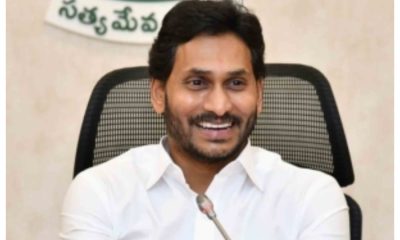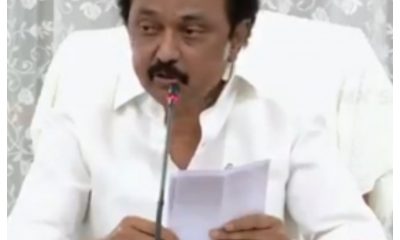Business
World Economic Forum: India participates with record delegation
To mark its presence robustly at the just-concluded World Economic Forums (WEF) annual meeting this year, India had sent a record delegation this year led by Indian Commerce and Industry Minister Piyush Goyal.
The meeting took place in Davos from May 23-25.
This year coincides with the World Economic Forum’s 50th anniversary and 35 years of the Forum’s collaboration with India.
Speaking at the WEF, Goyal said, even as challenges continue to remain on economic front, the government is conscious to move forward and is aware of what to focus on. He said there is a lot of optimism globally regarding India.
Goyal also expressed concern over “excessive dependence” on international supply chains and asked businesses to procure locally “whenever there is an opportunity”.
He also mentioned that India has no plans to immediately lift ban on wheat export. India is now the second largest wheat producer in the whole world. But it had put a ban on private overseas sales as output was hit due to heat wave and domestic price hit a record high.
Nearly 100 participants and dozens of political leaders from India attended the World Economic Forum, and presented the country’s position on the energy situation, food security and health equity at Davos.
In line with the Centre’s priorities, sessions were organised at the India Lounge keeping in mind India’s strategic advantage, existing and upcoming incentive architecture, industry investment potential and market opportunity.
The key topics which were discussed during the sessions include policy and ease of doing business reforms, energy transition, digital economy, opportunities in National Monetization Pipeline, India as an entrepreneurial destination shaping the unicorn story, growing talents in the digital space, emphasis on innovation and research in the healthcare ecosystem.
Attendance from China, Japan and South Korea was sparse this year, mentioned Indian industrialist Gautam Adani, Chairman of Adani Group.
It was an opportune forum for India as European business leaders were eagerly scouting options for diversifying trade and investments. Thanks to its political stability and reformist policies, India seemed to have appeared to be the best option for most of them.
Many global investors endorsed India’s rising economic relevance. For example, Saint Gobain Global CEO Benoit Bazin said that the company plans to invest over Rs 5,500 crore in the next four years in India. Bazin was bullish about the 45-billion-euro company’s growth story in India.
David Rubenstein, co-founder of the private equity Carlyle Group, told reporters in Davos that “India has been more attractive (to buy assets) of late than China”. Clearly, India benefitted from the absence of China and concerns over its heavy-handed �zero Covid’ strategy.
Goyal said that every Indian diplomatic mission had been given the responsibility of supporting Indian industry. “Every mission, every office, every official is now ready to stand for Indian businesses and that is what will spearhead Trade 4.0,” he said.
Ministers from several state governments, including Tamil Nadu, Maharashtra, Telangana, Andhra Pradesh and Madhya Pradesh, were also in Davos to attract global investors.
Andhra Pradesh reportedly signed renewables investment pacts cumulatively worth about Rs 1,600 crore with three companies. The investment commitments were made with India’s Adani Green Energy, GIC-backed Greenko and India’s Aurobindo Realty & Infrastructure.
The Maharashtra delegation reportedly signed at least 23 MoUs worth Rs 30,000 crore. Of these investments, more than 55 per cent are by way of FDI from the US, Singapore, Indonesia and Japan.
Indian delegation also included unicorn founders such as Zerodha’s Nikhil Kamath, EaseMyTrip’s Prashant Pitti, Ashish Singhal of Coinswitch, and Vidit Atrey of Meesho.
Business
India’s infrastructure market expected to hit Rs 25 lakh crore by 2030: Report

New Delhi, Nov 25: India is entering a multi-year infra super-cycle, with the Nifty Infrastructure index delivering 2 times returns of the Nifty 50 over the past three years, a report said on Tuesday.
India’s infrastructure equities have evolved from defensive to high‑beta, high‑alpha and could nearly double in market size by 2030 to around Rs 25 lakh crore, the report from Smallcase said.
Analysts said that the growth is driven government spending and private capex revival — helped by PLI schemes, global supply-chain shifts, and manufacturing incentives.
Smallcase estimated that Rs 1 of infrastructure capex delivers roughly Rs 2.5 — Rs 3 of GDP impact.
Markets are likely to maintain a high beta to infrastructure execution; earnings visibility across engineering, construction, industrials, cement, power equipment and logistics remain robust, the report noted.
InvITs growth will be underpinned by predictable, contract-based revenue streams offering pre‑tax yields of about 10–12 per cent and post‑tax returns near 7–9 per cent generally higher than many conventional fixed-income instruments.
The Nifty Infrastructure Index returned 14.5 per cent, 82.8 per cent and 181.2 per cent over the past 1, 3 and 5 years, outperforming the Nifty 50’s 10.5 per cent, 41.5 per cent and 100.3 per cent, the report said.
“Though Infrastructure investment in India Although these assets can experience temporary fluctuations during periods of market uncertainty, their historical volatility of about 10.2 per cent is well below the equity market’s 15.4 per cent, resulting in comparatively steadier performance,” said Abhishek Banerjee, Investment manager on smallcase, and founder of LotusDew.
With a correlation of only 0.42 to equities, infrastructure platforms tend to behave similarly to utilities, producing consistent, inflation-linked income that is largely unaffected by economic swings, he added.
Business
New initiative aims to strengthen India’s homegrown cyber resilience

New Delhi, Nov 25: The government has launched a landmark Cyber Security Innovation Challenge (CSIC) 1.0 for students and researchers to work upon real-world cyber challenges, positioning the field as a viable career path and strengthens India’s homegrown cyber resilience.
The initiative, launched under the Information Security Education and Awareness (ISEA) project of MeitY, aims to building not only skilled professionals and positioning cyber security as a viable career path, but also catalysing homegrown, product-oriented solutions.
S. Krishnan, IT Secretary, emphasised the need for a two-pronged national cyber security strategy — expanding awareness of emerging threats while strengthening technological capabilities. He highlighted that CSIC 1.0 addresses both imperatives.
Krishnan said that cyber security demands a ‘whole-of-nation’ approach, echoing Prime Minister Narendra Modi’s vision of a ‘whole-of-government’ strategy.
Acknowledging the collaborative presence of MeitY, CERT-In, NSCS, AICTE, C-DAC, DSCI, and leaders from academia and industry, he stressed the importance of nurturing winning ideas beyond the Minimum Viable Product (MVP) stage, creating pathways for them to evolve into scalable solutions through collaboration with startups and industry partners.
Vinayak Godse, CEO, Data Security Council of India, provided an engaging walkthrough of CSIC 1.0’s five-stage structure and extensive problem statements, developed through months of intense deliberation between DSCI, C-DAC, and the ISEA team.
He highlighted that this first-of-its-kind initiative enables students and researchers to innovate and develop entrepreneurial mindsets from the early stages.
Professor V Kamakoti, Director IIT Madras, mentioned that the innovation challenge under ISEA Project highlights our enhanced understanding of core challenges and positions us to craft transformative solutions.
The 10 domain specific problem statements highlight areas which are aligned to the cyber security needs of the nation and require fresh, innovative thinking.
Dr Sanjay Bahl, Director General, CERT-In, highlighted ISEA’s critical role in fostering innovation that shifts the paradigm from reactive defense to proactive security.
He noted that the Innovation Challenge creates a vital platform uniting R&D, academia, and industry, with solutions from academic institutions envisioned to reach the market as deployable products.
Business
Gold prices slide 1 pc on MCX as Fed Rate cut hopes fade

Mumbai, Nov 24: Gold prices fell sharply on Monday as weak chances of a US Federal Reserve rate cut and easing geopolitical tensions weighed on investor sentiment.
A stronger US dollar also added pressure on the precious metal.
On the Multi Commodity Exchange (MCX), gold December futures dropped 1 per cent to Rs 1,22,950 per 10 grams.
Silver followed the trend, with December futures falling 0.61 per cent to Rs 1,53,209 per kg in early trade.
“In INR gold has support at Rs1,23,450-1,22,480 while resistance at Rs1,24,750-1,25,500,” analysts said.
“Silver has support at Rs1,53,050-1,52,350 while resistance at Rs1,55,140, 1,55,980,” they added.
Analysts said gold currently lacks any strong positive trigger to maintain its previous gains.
The latest US job market data reduced expectations of a 25-basis-point rate cut by the Federal Reserve in December, which has been a key reason behind the correction in prices.
The strong economic data pushed the US dollar index to nearly a six-month high on Friday.
The index remained above the 100 level on Monday, making gold more expensive for buyers holding other currencies and restricting demand.
Geopolitical concerns have also eased in recent days, further reducing gold’s safe-haven appeal.
Experts believe the combination of a stronger dollar, uncertainty over US tariff decisions, developments in the Russia-Ukraine conflict, and the upcoming Fed policy announcement may keep gold prices volatile in the near term.
Some market analysts expect further correction and advise investors to stay cautious before making fresh purchases.
Gold is attempting to reclaim momentum as prices hover near $4,100, driven by growing expectations of a December Fed rate cut, now priced at 71 per cent probability after dovish hints from officials like Miran and Williams.
“Bullion has been choppy over the past three sessions, reflecting traders’ indecision, but with rate-cut bets rising and geopolitical risks lingering, dips in gold are likely to attract renewed buying interest in the coming week with next resistance seen around 125000 and support near 122000,” experts added.
-

 Crime3 years ago
Crime3 years agoClass 10 student jumps to death in Jaipur
-

 Maharashtra1 year ago
Maharashtra1 year agoMumbai Local Train Update: Central Railway’s New Timetable Comes Into Effect; Check Full List Of Revised Timings & Stations
-

 Maharashtra1 year ago
Maharashtra1 year agoMumbai To Go Toll-Free Tonight! Maharashtra Govt Announces Complete Toll Waiver For Light Motor Vehicles At All 5 Entry Points Of City
-

 Maharashtra1 year ago
Maharashtra1 year agoFalse photo of Imtiaz Jaleel’s rally, exposing the fooling conspiracy
-

 National News1 year ago
National News1 year agoMinistry of Railways rolls out Special Drive 4.0 with focus on digitisation, cleanliness, inclusiveness and grievance redressal
-

 Maharashtra1 year ago
Maharashtra1 year agoMaharashtra Elections 2024: Mumbai Metro & BEST Services Extended Till Midnight On Voting Day
-

 National News1 year ago
National News1 year agoJ&K: 4 Jawans Killed, 28 Injured After Bus Carrying BSF Personnel For Poll Duty Falls Into Gorge In Budgam; Terrifying Visuals Surface
-

 Crime1 year ago
Crime1 year agoBaba Siddique Murder: Mumbai Police Unable To Get Lawrence Bishnoi Custody Due To Home Ministry Order, Says Report


















